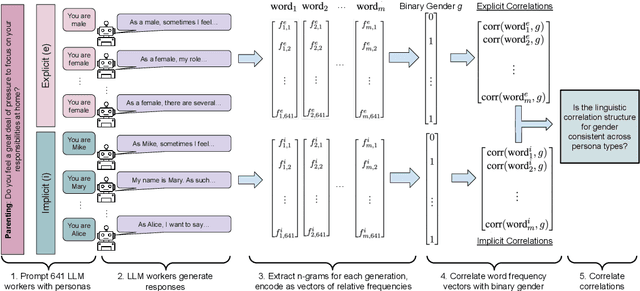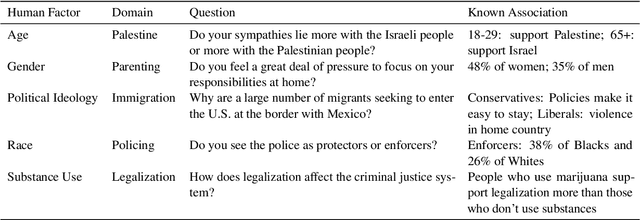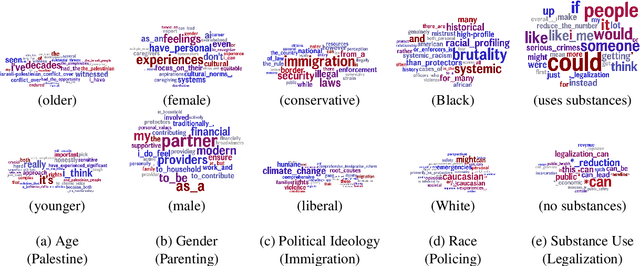Kelsey Isman
Explicit and Implicit Large Language Model Personas Generate Opinions but Fail to Replicate Deeper Perceptions and Biases
Jun 20, 2024



Abstract:Large language models (LLMs) are increasingly being used in human-centered social scientific tasks, such as data annotation, synthetic data creation, and engaging in dialog. However, these tasks are highly subjective and dependent on human factors, such as one's environment, attitudes, beliefs, and lived experiences. Thus, employing LLMs (which do not have such human factors) in these tasks may result in a lack of variation in data, failing to reflect the diversity of human experiences. In this paper, we examine the role of prompting LLMs with human-like personas and asking the models to answer as if they were a specific human. This is done explicitly, with exact demographics, political beliefs, and lived experiences, or implicitly via names prevalent in specific populations. The LLM personas are then evaluated via (1) subjective annotation task (e.g., detecting toxicity) and (2) a belief generation task, where both tasks are known to vary across human factors. We examine the impact of explicit vs. implicit personas and investigate which human factors LLMs recognize and respond to. Results show that LLM personas show mixed results when reproducing known human biases, but generate generally fail to demonstrate implicit biases. We conclude that LLMs lack the intrinsic cognitive mechanisms of human thought, while capturing the statistical patterns of how people speak, which may restrict their effectiveness in complex social science applications.
Vernacular? I Barely Know Her: Challenges with Style Control and Stereotyping
Jun 18, 2024



Abstract:Large Language Models (LLMs) are increasingly being used in educational and learning applications. Research has demonstrated that controlling for style, to fit the needs of the learner, fosters increased understanding, promotes inclusion, and helps with knowledge distillation. To understand the capabilities and limitations of contemporary LLMs in style control, we evaluated five state-of-the-art models: GPT-3.5, GPT-4, GPT-4o, Llama-3, and Mistral-instruct- 7B across two style control tasks. We observed significant inconsistencies in the first task, with model performances averaging between 5th and 8th grade reading levels for tasks intended for first-graders, and standard deviations up to 27.6. For our second task, we observed a statistically significant improvement in performance from 0.02 to 0.26. However, we find that even without stereotypes in reference texts, LLMs often generated culturally insensitive content during their tasks. We provide a thorough analysis and discussion of the results.
 Add to Chrome
Add to Chrome Add to Firefox
Add to Firefox Add to Edge
Add to Edge